One of the signs indicating significant places in the "Nachalat Shiva" neighborhood.
The place is indicated as number 6, on the neighborhood map that appears on the next sign
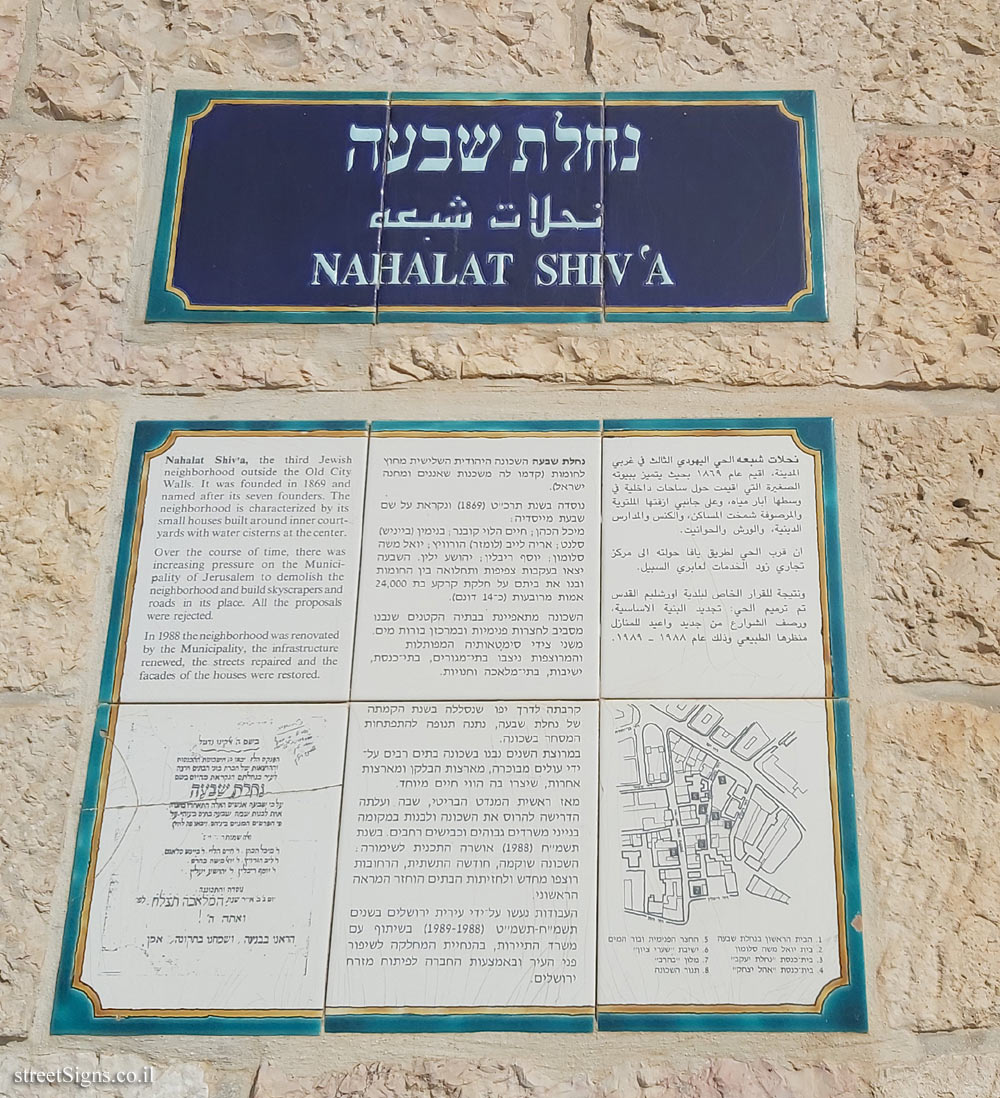 Click for sign's details
Click for sign's details 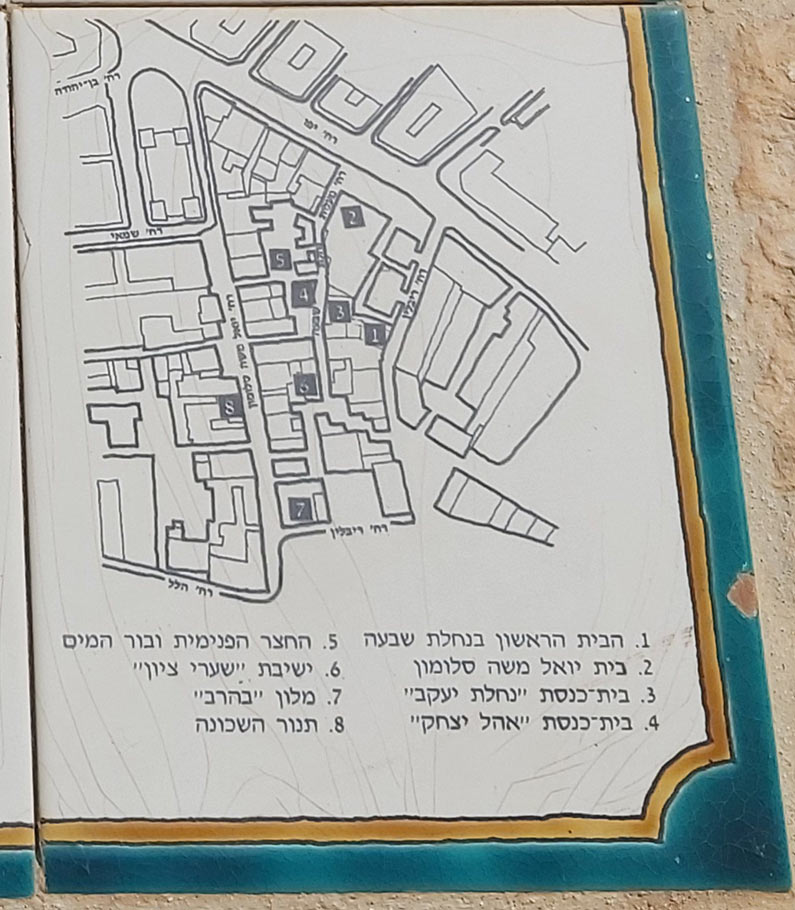 Click for a larger image
Click for a larger image The place was photographed on the same day by the same photographer
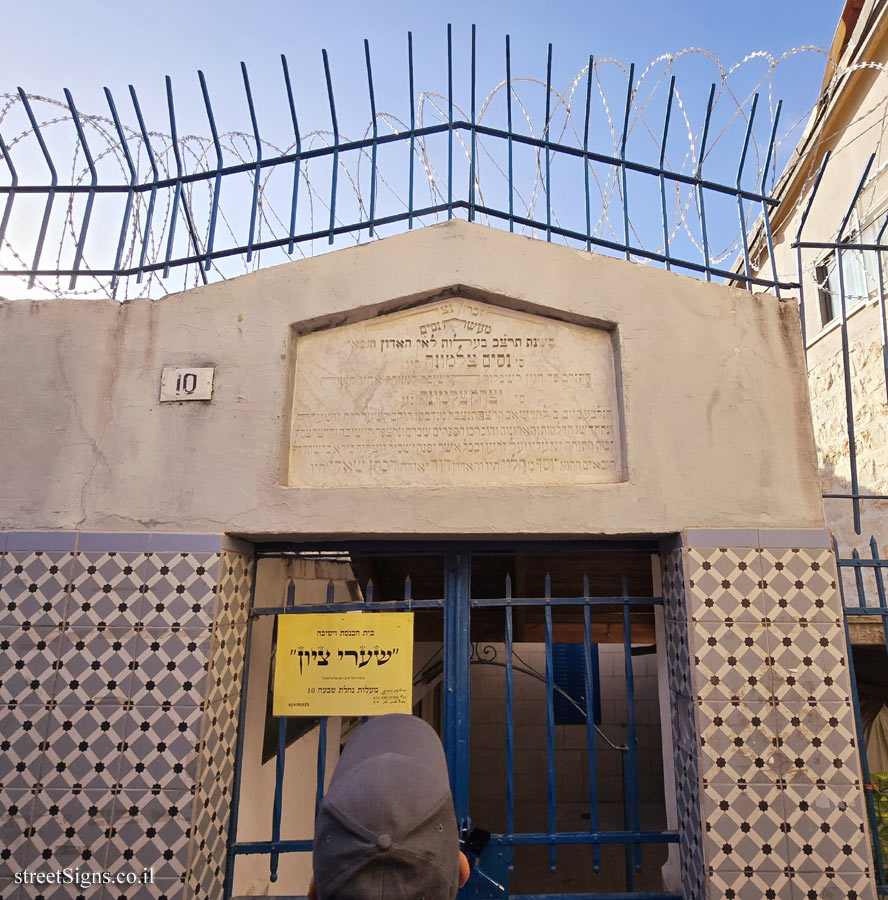 Click for a larger image
Click for a larger image A stone plaque above the entrance door indicating the renovation of the building by Nissim Tzalmona:
זכרון נצח
מעשה נסים
בשנת תרצ"ב בעלות לא"י האדון הגבאי
סי נסים צלמונה הי"ו
התורם סך הגון לשכלול הישיבה למנוחת אחיו המנוח
סי יצחק צלמונה נ"ע
הנל בע [בא לעולמו] ביום כ לחדש אב תרצ"א תנצ"בה מנדבתו הוקם השער הזה והמעקה
ונתחדשו הדלתות והארונות והוכרחו הספרים שבהם ונרצפה הישיבה והחצר
זכות התורה יגן עליו ועל זרעו ובכל אשר יפנה ישכיל ויצליח כירא בהשתדל
הגבאים הרה"ג יוסף מ הלוי הי"ו והאדון דוד יאודה שאקי הי"ו
[Translation]
Eternal memory
A miraculous deed
In the year 1932, when the Gabbai, Rabbi Nissim Zalmona, immigrated to the Land of Israel, may God preserve him.
The generous donor to the improvement of the yeshiva for the repose of his deceased brother, Rabbi Yitzhak Zalmona, may his soul rest in peace.
He passed away on the 20th of Av 1931. May his soul be bound in the bundle of life. From his donation, this gate and railing were erected.
And the doors, cupboards, and books were renewed, bound, and the yeshiva and courtyard were paved.
The righteousness of the Torah will protect him and his descendants, and in everything he turns, he will be wise and successful, as if he had tried.
The Gabbai, Rabbi Yosef of HaLevi, the 16th, and the Gabbai, Rabbi David Yauda Shaki, the 16th.
The plaque was photographed on the same day by the same photographer
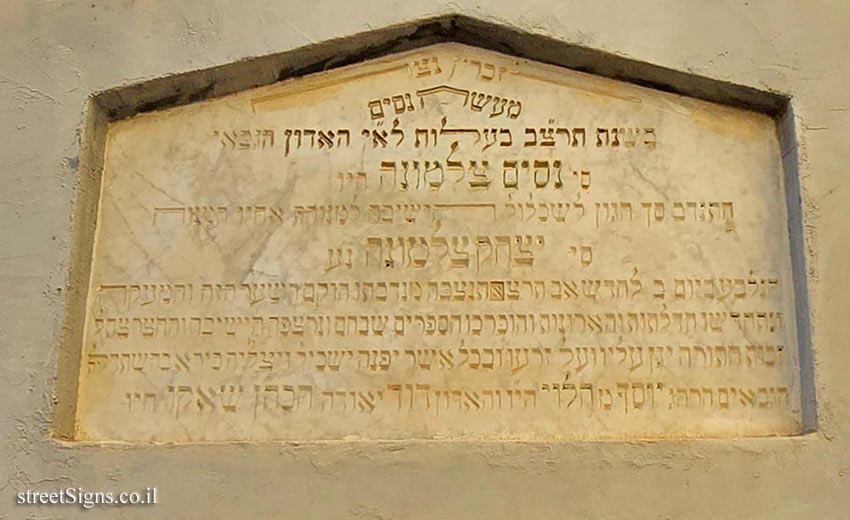 Click for a larger image Translation of the text on the sign
Click for a larger image Translation of the text on the sign:
Yeshiva "Shaarei Zion" The yeshiva for the Sephardic community was established in the early 1870s with the funds of the great Rabbi Rafael Naftali Halevi of Kusta. It was originally called "Yeshiva Ahad", according to the gematria of its 13 founders.
Over the years, the yeshiva was closed, and after an extensive process of renovations, initiated by the Rishon LeZion Rabbi Uziel, and with the funds of the late Nissim Zalmona, it was reopened in 1939 as a Talmud Torah and yeshiva called "Shaarei Zion".
The building was built in the oriental style that was common in the Old City.
Learn about:

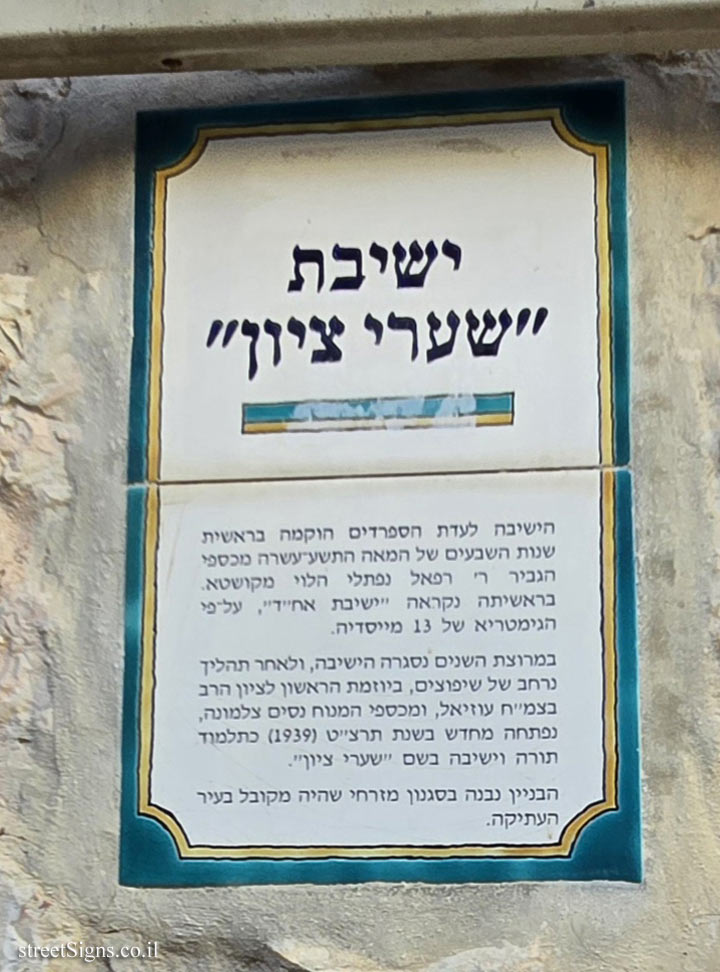

 Click for sign's details
Click for sign's details Click for a larger image
Click for a larger image  Click for a larger image
Click for a larger image  Click for a larger image
Click for a larger image